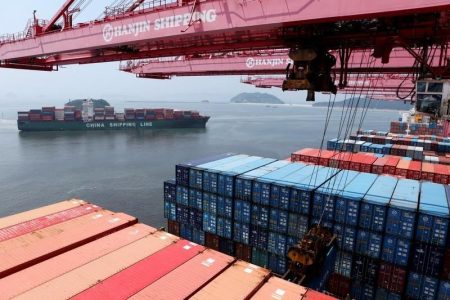HAMBURG (Reuters) – Attacks on shipping in the Red Sea region have in past days led to a sharp rise in the number of grain cargoes being diverted around the Cape of Good Hope, rather than using the Suez Canal, grain traders and analysts said on Friday.
Earlier this week, shipping sources had said they expected some grain cargo diversions but that most would continue to risk passing through the Suez Canal, which is the shortest shipping route between Europe and Asia.
But continued attacks on shipping this week by Iran-backed Houthi militia despite U.S.-led air strikes on Houthi positions in Yemen mean more dry bulk carriers transporting grain are avoiding the Red Sea, analysts and grain traders said.
“About 3 million metric tons of about 7 million tons a month that normally goes through Suez has been diverted,” Ishan Bhanu, lead agricultural commodities analyst at data provider and analysts Kpler, said. “So, this week, the number diverting away from the Red Sea has jumped from 20% to 45%.”
He said on Friday, Kpler had traced traced another 18 vessels diverting carrying in total about 1 million tons of grains.
“One vessel carrying soybeans from the U.S. to China, had travelled all the way to Egypt and decided to turn around before entering the Suez Canal,” he said.
Wheat shipments via the Suez Canal fell by almost 40% in the first half of January to 0.5 million metric tons due to attacks in the Red Sea and Gulf of Aden, the World Trade Organization said on Thursday.
“The number of diversions has certainly become more serious in the past couple of days,” a German grain trader said, but, as an active charterer of vessels to ship his company’s grains, added that large numbers of bulk carriers were still sailing via the Red Sea.
Read the full article here









